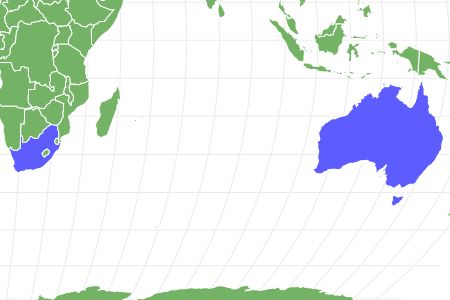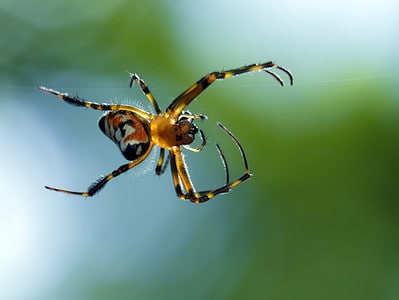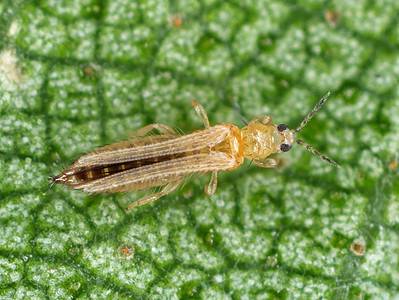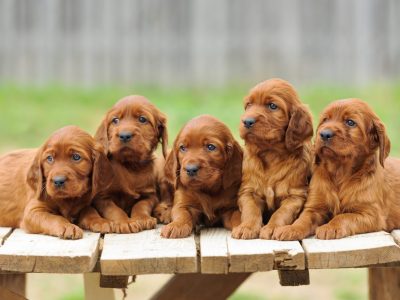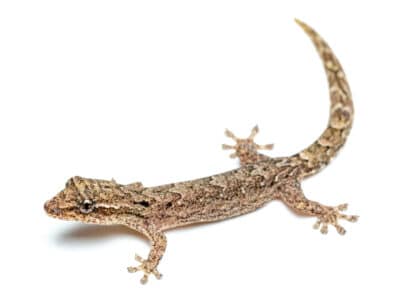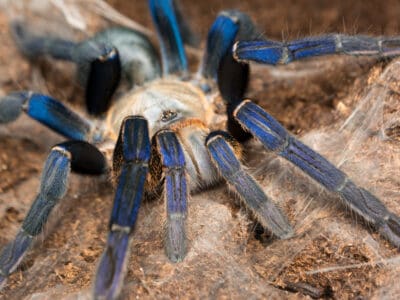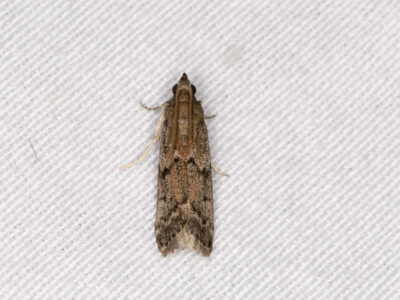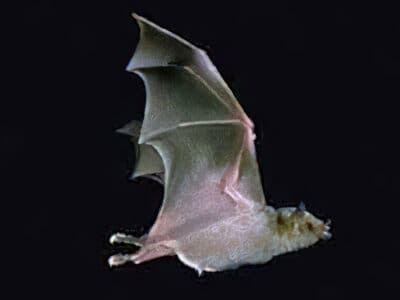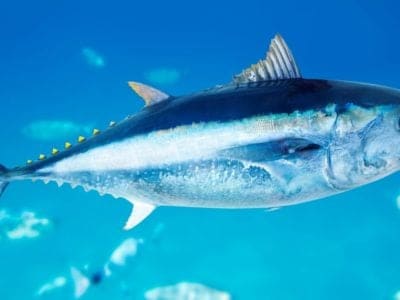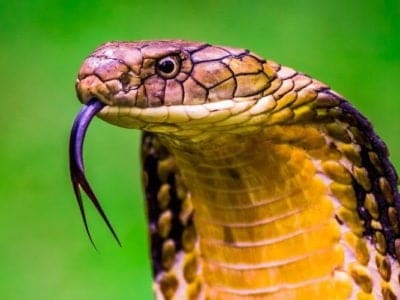Christmas Beetle
Anoplognathus viriditarsus
Christmas beetles got their common name because they’re most abundant around Christmas time.
Advertisement
Christmas Beetle Scientific Classification
- Kingdom
- Animalia
- Phylum
- Arthropoda
- Class
- Insecta
- Order
- Coleoptera
- Family
- Scarabaeidae
- Genus
- Anoplognathus
- Scientific Name
- Anoplognathus viriditarsus
Read our Complete Guide to Classification of Animals.
Christmas Beetle Conservation Status
Christmas Beetle Facts
- Fun Fact
- Christmas beetles got their common name because they’re most abundant around Christmas time.
- Most Distinctive Feature
- Shimmering metallic body
- Habitat
- Underground
- Predators
- Possums, currawongs, and magpies
- Diet
- Herbivore
- Lifestyle
- Nocturnal
- Group
- Type
- Insect
- Common Name
- Christmas beetle
- Special Features
- Metallic-colored body
- Location
- Australia, South-Africa
View all of the Christmas Beetle images!
Christmas beetles got their common name because they’re most abundant around Christmastime.
Summary
The common name ‘Christmas beetle’ applies to bugs in the genus Anoplognathus. Native to Australia and South Africa, there are 35 species of beetles in this genus. The largest of them is the Anoplognathus viriditarsus, which is commonly found in Sydney. They spend most of the year underground and emerge around Christmastime each year. Adults are pests that feed on the leaves of eucalyptus trees.
Christmas Beetles Species, Types, and Scientific Name
The common name Christmas beetle applies to any of the 35 species of beetles in the genus Anoplognathus. They are called Christmas beetles because they tend to be more abundant close to Christmastime every year. They’re native to Australia and South Africa. About 8 out of the 35 species of this beetle are found in Sydney, Australia. They are pests of the Eucalyptus plant, which they feed on voraciously as adults.
The most popular member of this group is the Anoplognathus viriditarsus, and it is also the largest. While the name is mostly applied to this genus of beetle, people often use it to loosely refer to other metallic-colored beetles like the stag beetle (genus Lamprima).
Christmas beetles belong to a family of insects known as scarabaeidae or scarab beetles. This is a large family of insects consisting of over 30,000 species of beetles found all over the world. Scarab beetles have stout bodies and often have bright metallic colors.
Appearance: How to Identify Christmas Beetles
Christmas beetles are relatively easy to spot and identify. Their shimmering metallic body is the main feature that gives them away. There are 35 species of this beetle, and they tend to have different appearances. The majority of them are golden brown or green. However, as you travel further North in Australia, you’re likely to see some interesting colors, including some violet or opal-colored species. The unique coloring of these beetles comes from a special layer of reflectors in their hardened shells.
Christmas beetles are large. Most species grow to about 20 to 30 mm (0.78-1.6inches) long. The most common species in this genus, the Anoplognathus pallidicollis, is about 20 mm long. Like all scarab beetles, Christmas beetles have clubbed antennae. They also have spiky legs, which they use to hold on to the plants they feed on.
The larvae of these beetles are C-shaped and white in color. They’re quite similar to the larvae of stag beetles and other scarab beetles. Like many of their closest relatives, Christmas beetles are clumsy and noisy fliers.
Habitat: Where to Find Christmas Beetles
Christmas beetles are well known in South Africa and Australia. In places where they’re found, they mostly live in forests and woodlands, but they become more common in both rural and urban areas close to the Christmas period. They are found all over Australia except the dry desert areas.
Females lay eggs underground. The C-shaped larvae will remain underground for most of the year. Then, they emerge as adults just before Christmas. The number of adults that will emerge often depends on the weather. Rainy weather with thunderstorms often encourages more beetles to emerge. However, if the weather is dry, you may not see any beetles at all.
Diet: What Do Christmas Beetles Eat?
Christmas beetles feed mainly on the leaves of eucalyptus plants. They may attack trees in large numbers; although they prefer mature leaves, they often defoliate trees completely, eating all the leaves, including the young, immature ones. They’re often in a feeding frenzy until it’s time to lay eggs for the next season. They lay eggs in the ground, and the larvae feed on grass roots and decaying plant matter underground.
What Eats Christmas Beetles?
They don’t have a lot of natural enemies. However, some animals such as possums, currawongs, and magpies can eat this bug. Some predatory wasps feed on Christmas beetles too. Birds can also pick the larvae and keep their population under control.
Prevention: How to Get Rid of Christmas Beetles
Christmas beetles are hardly problematic, especially when they’re in low numbers. They provide a wide range of benefits to the ecosystem, so there’s often no need to get rid of them. In addition, some natural predators help to keep their numbers under control. You can also keep their population down through proper maintenance of your lawn. Getting rid of common hiding spots such as plant debris and leaf litter can make your space less attractive to these beetles.
Watering your lawn, aerating your flower birds, and compressing your lawn makes it difficult for females to lay eggs and keeps them from surviving. You can also protect eucalyptus trees directly by placing mesh-type netting around the trees to protect them.
There are no chemical insecticides to control this beetle. Most gardeners often rely on biological measures to keep their populations down. Parasitic wasps, some rodents, birds, and bats can feed on adult beetles. They only live for a few weeks after hatching, so infestations typically don’t last long.
Related Animals
View all 235 animals that start with CChristmas Beetle FAQs (Frequently Asked Questions)
Are christmas beetles native to Australia?
Yes. Christmas beetles are native to Australia and are quite common across various locations in the country except in the desert regions. There are more than 35 endemic species of Christmas beetles in Australia with up to 8 of them in Sydney alone. Christmas beetles are also found in South Africa.
Are christmas beetles still around?
Christmas beetles are often more abundant around Christmas and then disappear shortly afterward. However, their population has been on a decline over the past few decades. So while they’re still around, they’re not as plentiful as they use to be. Experts think this is due to the loss of grassy woodland which is their natural habitat due to housing and other human activities.
Are christmas beetles pests?
Adult Christmas beetles are not much of a pest in home gardens. While they feed on the leaves of the eucalyptus plant, their population is usually too low to cause serious damage. However, a large infestation can cause complete defoliation of the affected plants.
Thank you for reading! Have some feedback for us? Contact the AZ Animals editorial team.
Sources
- Better Homes and Gardens / Jenny Dillon, Available here: https://www.bhg.com.au/guide-to-christmas-beetles
- Wikipedia, Available here: https://en.wikipedia.org/wiki/Christmas_beetle
- Australian Museum, Available here: https://australian.museum/learn/animals/insects/christmas-beetle/
- Backyard Buddies, Available here: https://backyardbuddies.org.au/backyard-buddies/christmas-beetles/

